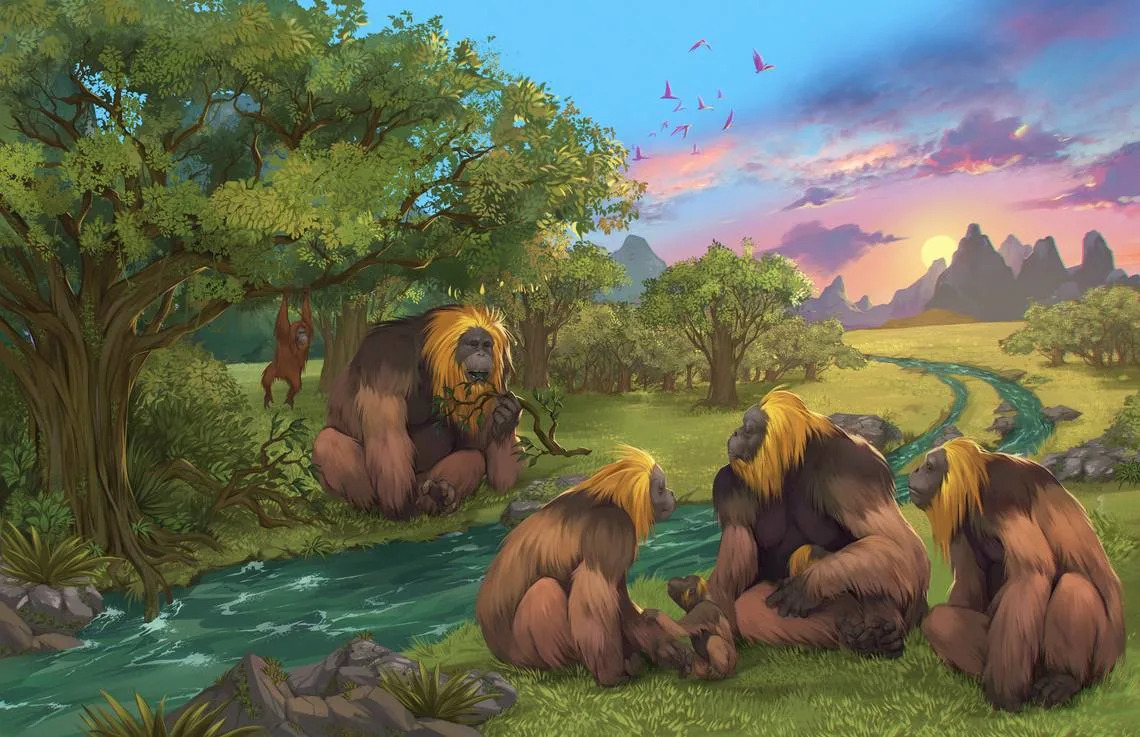Brendan Rascius
Wed, January 17, 2024

Standing at 9 feet tall and weighing up to 660 pounds, Gigantopithecus blacki was the largest primate to walk the Earth.
The giant ape — an herbivore with a fondness for fruit — appeared in modern-day China about 2 million years ago. But, several hundred thousand years ago, it mysteriously went extinct, leaving behind only a handful of remains and a host of questions.
Now, following a new analysis, researchers revealed that the king of the apes likely met its fate as a result of dramatic climatic changes, according to a study published on Jan. 10 in the journal Nature.
“Ultimately its struggle to adapt (to these changes) led to the extinction of the greatest primate to ever inhabit the Earth,” an international team of researchers wrote.
Origins
Evidence of the colossal creature’s existence was discovered in 1935 at an apothecary in Hong Kong.
While at a store, German paleontologist Gustav von Koenigswald came across what he described as a “dragon tooth,” but later determined once belonged to a great ape.
The tooth prompted a broader search for similar remains, which culminated in the discovery of multiple caves in China’s Guangxi province containing “crucial evidence” for the existence of Gigantopithecus blacki.
Over the ensuing decades, researchers turned up four jawbones and around 2,000 teeth, including “unusually large molars.”
Now, researchers have thoroughly studied the remains from 22 caves using a combination of behavioral and paleoclimatic analyses and dating techniques.
‘Enigmatic’ demise
These analyses led researchers to determine the apes date back 2.3 million years to a time when southern China was bursting with plant life, including forests and patches of grasslands
The giant apes fed primarily on fruit and other secondary options of low nutritional value. This diet, in addition to the apes’ large, less mobile frames, made them vulnerable to environmental change, researchers said.
Such a change happened around 250,000 years ago, characterized by a marked decline in tree cover and a proliferation in grasslands less suitable for foraging.
As a result, Gigantopithecus blacki “showed signs of chronic stress and dwindling populations,” eventually spelling its destruction as recently as 215,000 years ago.
The giant ape “was the ultimate specialist and, when the arboreal environments changed, its struggle to adapt sealed its fate,” researchers said. “Its demise is enigmatic considering that it was one of the few Asian great apes to go extinct in the last 2.6 million years, whereas others, including orangutan, survived until the present.”
The ape was, well, giant. Like "as tall as a basketball hoop," according to the New York Times. Chill!u/TuxedoDood / Via reddit.com

No comments:
Post a Comment